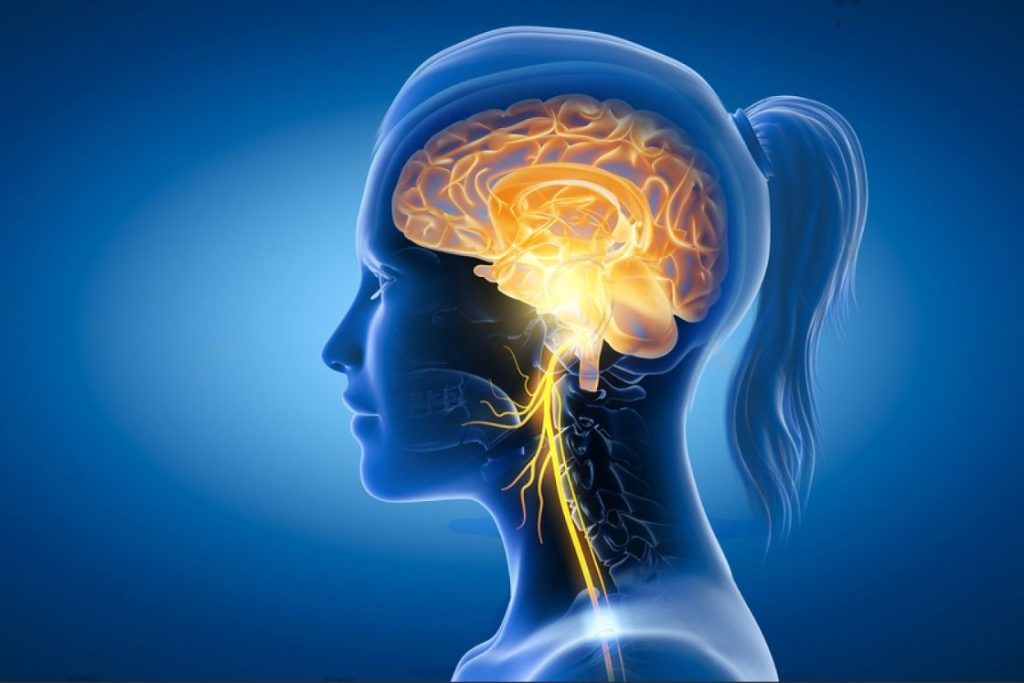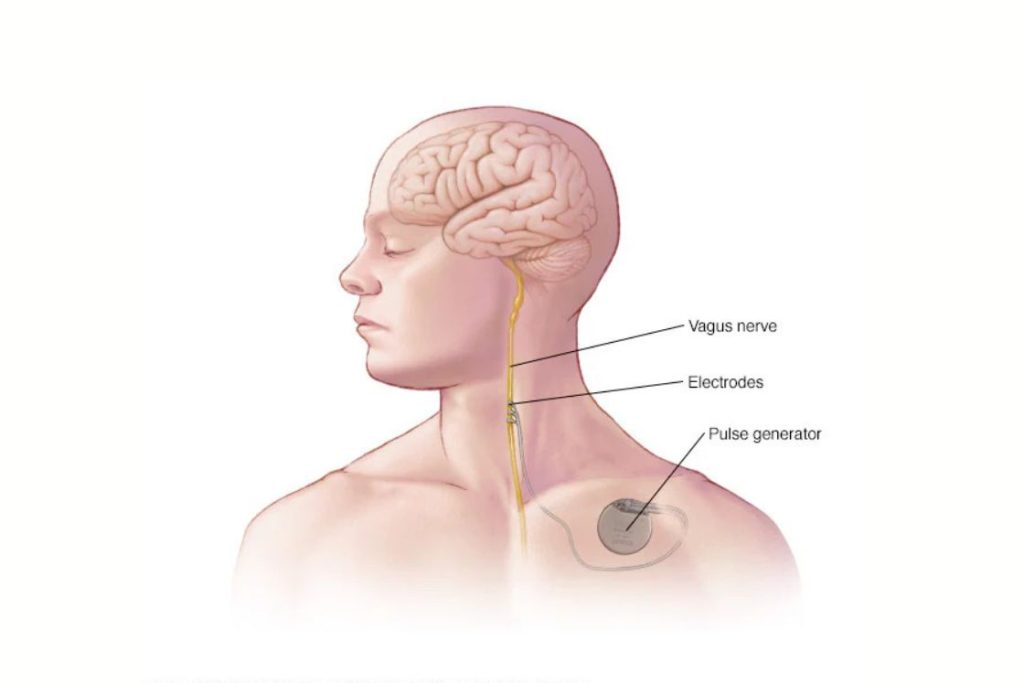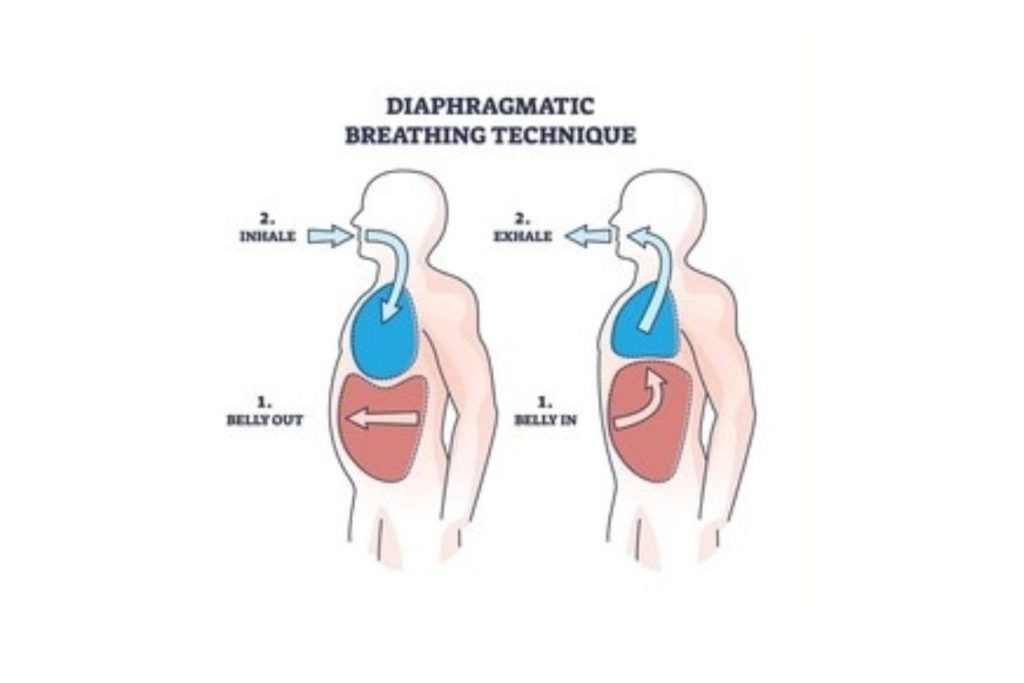- Vagus Nerve Anatomy
- Yogasanas & the Vagus Nerve
- Pranayama & the Vagus Nerve
- Meditation & the Vagus Nerve

At the heart of our intricate nervous system lies the Vagus nerve, a meandering powerhouse that starts in the brain and threads its way down to the abdomen. But what makes it so special?
The Vagus nerve is essentially the body’s communication superhighway, connecting the brain to many vital organs such as the heart, lungs, and gut. It plays a pivotal role in regulating our internal environment, ensuring we function harmoniously. Its influence on our well-being is profound, which makes understanding it vital for anyone interested in holistic health.
Yoga, an ancient practice that transcends time and culture, not only strengthens our bodies and calms our minds but also has deep-rooted connections with our nervous health, specifically the Vagus nerve.
While we align our poses and focus on our breath, there’s a silent, beautiful interaction taking place within, where the rhythms of our breath can harmonize with the Vagus nerve’s functions. It’s a profound union of body, mind, and inner physiology that forms the core essence of yoga’s benefit to our nervous system.
Benefits of Positively Stimulated Vagus Nerve:
- Mood Regulation and Depression Alleviation
- Improved Cardiac Health and healthy Heart Rate Variability
- An optimized respiratory system
- A Contented Gut: Enhanced Digestion and Gut Health
- An efficient excretion management
- Boost in Immune Function
Anatomy and Function of the Vagus Nerve

- The Vagus Nerve’s Journey: From Brain to Belly
Let’s begin by visualizing the intricate path of the Vagus nerve. Originating from the base of the brain, this remarkable nerve, the longest of our cranial nerves, begins its descent. Like a gentle river that winds its way through the landscape, the Vagus nerve gracefully courses down our neck, passing through the chest, and finally reaching deep into our abdomen. Its expansive reach is testament to its indispensable role in our body.
- The Calming Conductor: The Vagus Nerve in the Parasympathetic System
In the grand orchestra that is our nervous system, think of the Vagus nerve as the conductor of the calming melodies. It’s a primary component of the Parasympathetic Nervous System, often fondly referred to as the “rest and digest” system. When life’s tumultuous pace overwhelms us, it’s this system, led by the Vagus nerve, that whispers, “It’s okay to pause, to relax, to restore.” It’s our built-in antidote to stress, ensuring that we remain balanced amidst life’s challenges.
- A Mediator of Vital Functions: The Vagus Nerve’s Role in Our Organs
Now, let’s delve deeper into the multitude of responsibilities the Vagus nerve shoulders. Picture your heart, steadily beating, setting the rhythm for life. The Vagus nerve plays a role here, subtly regulating our heart rate. Journey further down to the stomach, and you’ll find the Vagus nerve again, ensuring our digestion runs smoothly, processing the nourishment we take in.
But that’s not all. Its tendrils spread out, connecting with the lungs, aiding in our breathing; with the kidneys, influencing filtration; and even with our vocal cords, playing a role in our voice modulation. Truly, the Vagus nerve is not just a nerve, but a lifeline, binding together various organs, ensuring they function in harmony, reflecting a holistic approach to our well-being.
In appreciating the Vagus nerve’s vastness and capabilities, we recognize the delicate, interconnectedness within our body. It’s a reminder that every part, every function, is intertwined, underpinning the profound truth that holistic health isn’t just a concept, but a living, breathing reality within us.
Vagus Nerve, a key component in the Autonomic Nervous System
The Vagus nerve, or cranial nerve X, is a key component of the parasympathetic division of the autonomic nervous system (ANS). The ANS, as you know, is responsible for regulating involuntary physiological functions, and it comprises two primary branches: the sympathetic (“fight or flight”) and parasympathetic (“rest and digest”) nervous systems.
- Chemical Messages and How They Work
Every communication within our body relies on a series of chemical messengers. The primary messenger for the Vagus nerve is acetylcholine. When this chemical is sent out, it fits into specific spots (called receptors) on our organs. Picture it like a puzzle piece fitting perfectly into its spot. This connection sends a signal, which leads our body to carry out certain actions, like relaxing or digesting.
- Regulating the Heartbeat
Our heart has a natural rhythm. The Vagus nerve directly connects to the heart and, like a conductor with an orchestra, it helps set the tempo. By releasing acetylcholine, the Vagus nerve tells the heart to take a relaxed pace, ensuring we’re not always in high gear. This not only conserves our energy but also makes digestion more efficient.
- Digestion’s Helpful Hand
Beyond the heart, the Vagus nerve is like a control center for our stomach and intestines. It ensures that food moves smoothly, sort of like how a conveyor belt operates. Additionally, it signals for the release of digestive juices. This ensures that whatever we eat is broken down properly, giving our body the nutrients it needs.
- Lung Control and Balance
For our lungs, the Vagus nerve acts as a gentle regulator. While its main job isn’t about breathing, it offers a counterbalance to the body’s stress reactions. It’s like having a calming voice amidst chaos, ensuring there’s always a balance between excitement and relaxation.
- Detecting and Reducing Inflammation
One of the lesser-known but equally impressive roles of the Vagus nerve is its ability to sense inflammation. Think of inflammation as the body’s alarm system when things go wrong, like when there’s an injury. When the Vagus nerve picks up on these alarms, it communicates with the brain. The brain then sends signals through the Vagus nerve to the affected area, working to dial down the inflammation. It’s a bit like our body’s natural firefighter.
- The Nerve’s Special Sensors
To better understand our body’s needs, the Vagus nerve comes equipped with tiny sensors. These are its mini detectives, picking up on changes like stretch or acidity levels. It’s the nerve’s way of staying informed about how different parts of our body are feeling and functioning.
Yogasanas and the Vagus Nerve

When we step onto our yoga mats and move through the different postures, we aren’t only moving our muscles and joints, but a deeper connection is taking place. Each yoga posture, or asana, harmonizes our physical, mental and energetic realms in a unique way. Some of these asanas, perhaps surprisingly, have a profound effect on the vagus nerve.
Take, for instance, the simple act of lifting the chest and arching the back in a posture like the Cobra or Bhujangasana. Here, by opening up the front of the body, we subtly massage the organs, indirectly stimulating the Vagus nerve and fostering a sense of inner calm. In contrast, forward bends, such as Paschimottanasana, compress the abdomen, again massaging the internal organs and offering a gentle nudge to the Vagus nerve.
- Deep Diaphragmatic Breathing and the Vagus Nerve

As we transition from one posture to another, a conscious yogic practice also emphasizes the breath. But this isn’t just any breath; it’s deep, diaphragmatic breathing. By guiding our breath deep into the diaphragm, rather than shallowly in the chest, we engage in a beautiful stimulation of the Vagus nerve.
This deep-breathing technique acts as a balm, activating the nerve and signaling the body to relax and unwind. Each inhalation stretches the diaphragm, and every exhalation releases tension, together sending soothing waves throughout the nervous system. Through this breath, we’re not merely oxygenating our cells; we’re nurturing our very essence, emphasizing the holistic embrace of yoga.
- Neck Stretches: The Direct Pathway to the Vagus Nerve

There’s a certain elegance in how specific yoga postures target the neck. Consider the gentle tilting in poses like Matsyasana (Fish Pose) or the rotation in Ardha Matsyendrasana (Half Spinal Twist). These aren’t just stretches for flexibility’s sake; they hold a deeper secret.
The neck houses a significant portion of the Vagus nerve. By mindfully stretching and compressing this area in various yoga postures, we offer direct stimulation to the nerve. This connection provides a potent tool in the yogi’s arsenal, allowing them to harness the benefits of the Vagus nerve’s calming influence more profoundly.
Pranayama (Breathing Techniques) and the Vagus Nerve

In the heart of yoga’s vast ocean of knowledge is Pranayama, a set of breathing techniques designed to harness, balance, and elevate our life force or ‘prana‘. While these practices have been passed down through millennia, modern science now unveils the profound connections between Pranayama and our Vagus nerve.
- Breathing Exercises that Awaken the Vagus Nerve
Among the many Pranayama techniques, there are specific ones that stand out in their ability to touch and activate the Vagus nerve.
Nadi Shodhana or Alternate Nostril Breathing is a good example. Sitting in quiet reflection, a practitioner inhales deeply through one nostril while the other is gently closed, then switches. This mindful interplay of breath not only calms the mind but also harmonizes the two hemispheres of the brain. In doing so, it indirectly sends signals to the Vagus nerve, fostering relaxation and balance.
Another good example is deep abdominal breathing. This technique is all about drawing the breath deep into the belly, feeling the diaphragm stretch and the abdomen expand. It’s a simple act, but its effects are profound. By engaging the diaphragm so directly, we massage internal organs, stimulate the Vagus nerve, and beckon the calming waves of the parasympathetic response.
- Conscious Breathing and Vagal Tone
So how do these practices intertwine with the Vagus nerve’s functionality? Let’s journey into the science behind it.
When we engage in these specific breathing techniques, especially deep abdominal breathing, we’re actively stimulating the diaphragm. This muscle, when stretched, provides gentle pressure on the Vagus nerve, which runs close by. As a result, the nerve is activated, and it sends signals to the brain to release neurotransmitters that promote relaxation and reduce stress.
Furthermore, deliberate and focused breathing fosters a rhythmic heart rate. The Vagus nerve monitors this rhythm closely. When the rhythm becomes coherent and balanced, thanks to our breathwork, the Vagal Tone is improved, indicating a healthier and more responsive Vagus nerve.
Pranayama, therefore, becomes more than a mere practice; it’s a bridge. A bridge that connects ancient wisdom with modern understanding, a bridge that leads us to holistic well-being. As we breathe deeply, rhythmically, and with intention, we’re not just nourishing our body; we’re touching the very essence of calm, balance, and rejuvenation, guided silently by the Vagus nerve’s embrace.
Meditation, Mindfulness, and the Vagus Nerve

Embark on a journey into any traditional meditation space, and you’re likely to be greeted with the deep, harmonizing sounds of chanting or humming. These sounds, especially the revered “Om” in yoga, are not just spiritually uplifting; they hold a profound connection with our Vagus nerve.
When we chant, hum, or sing, vibrations reverberate through our body, particularly resonating within the throat and chest. This sound-based vibration is a gentle massage for the Vagus nerve, which travels through the neck. Chanting “Om” or other mantras produces a frequency that seems to align harmoniously with the natural frequency of the body, promoting relaxation and tranquility.
Moreover, the act of prolonged exhalation during chanting helps deepen our breath, further activating the Vagus nerve. So, the next time you’re enveloped in the warm embrace of an “Om” chant, remember, it’s more than just sound; it’s the song of holistic well-being.
- Mindfulness: A Gentle Embrace for the Vagus Nerve
Mindfulness, at its core, is about being present, deeply tuned into the moment, without judgment. It’s a state of attentive grace that, while subtle, has profound implications for our inner health.
When practicing yoga or meditation, the journey of mindfulness can be a potent tool for Vagus nerve stimulation. Here’s how: Stress, anxiety, and constant rumination activate our sympathetic nervous system, our body’s “fight or flight” response. However, by anchoring our awareness in the present — be it on the breath, body sensations, or the ambient sounds — we shift the balance towards the parasympathetic system, where the Vagus nerve plays its calming role.
Regular mindfulness practices train our brain and body to access this relaxation response more readily. By merely being present, observing without judgment, we create an environment for the Vagus nerve to thrive, promoting better Vagal Tone and overall well-being.
Conclusion | The Path of Prudence: Who Should Tread Cautiously?
For many, yoga is a sanctuary, a space of peace and rejuvenation. But there are souls for whom certain yogic practices require more discernment. If you have a pre-existing heart condition, respiratory issues, or any neuro-related challenges, it’s essential to approach specific postures and breathing techniques with caution.
People with conditions like bradycardia (an unusually slow heart rate) or those on certain medications influencing heart rhythms might experience amplified effects when trying to stimulate the Vagus nerve. Similarly, individuals with a history of severe respiratory conditions should approach breathing exercises, particularly those that involve breath retention, with care.
This isn’t to say yoga is off-bounds. Far from it. But it’s a gentle nudge towards seeking professional guidance, perhaps consulting with a healthcare provider and an experienced yoga instructor before diving deep. The confluence of medical knowledge with ancient yogic wisdom ensures that the journey remains safe, personalized, and profoundly enriching.
Embarking on the path of yoga and Vagus nerve stimulation is akin to wandering through a forest, where every tree, every bend, holds a lesson. It’s about embracing the beauty but also being aware of the challenges. With a touch of caution, a dash of wisdom, and the guiding hand of expertise, the journey becomes not just safe but transformative, leading to the very heart of holistic well-being.




